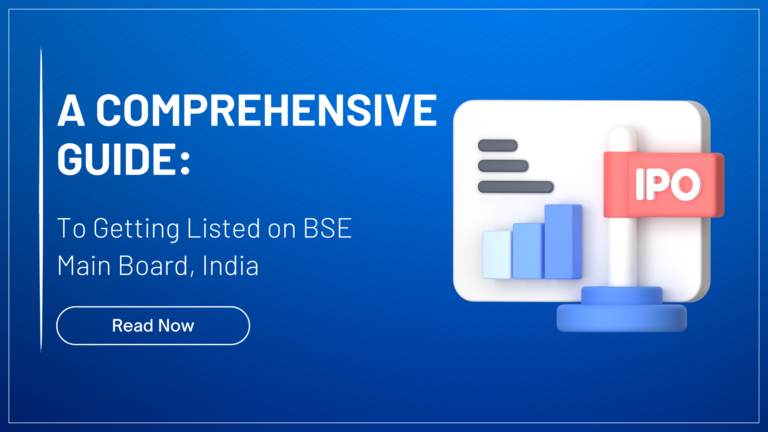
A Comprehensive Guide to Getting Listed on BSE Main Board, India
Welcome to a comprehensive blog post on the process of listing your company on the Bombay Stock Exchange (BSE) Main Board in India. For many businesses, achieving a listing on a stock exchange is a significant milestone. It opens up new opportunities for growth, funding, and visibility among investors. However, the process can be complex, involving various eligibility criteria, steps, and requirements. This blog aims to simplify the process for you and provide a step-by-step guide on how you can list your company on the BSE.
1. Why Choose the BSE?
The BSE, also known as the Bombay Stock Exchange, is one of the oldest stock exchanges in Asia and the fastest stock exchange in the world with a median trade speed of 6 microseconds. BSE has helped numerous companies in India to raise capital and grow their businesses. Listing on the BSE can enhance a company’s visibility and credibility with investors, customers, and employees.
2. Key Requirements for Listing on the BSE Main Board
Before we delve into the process, let’s look at the primary eligibility criteria set by the BSE. These include:
1. Minimum Post Issue Paid-Up Capital: The minimum post-issue paid-up capital of the company (face value) should be at least INR 10 crores, and the minimum net worth (pre-issue) should be INR 1 crore in each of the three preceding full years.
2. Distributable Profits: The company should have a track record of distributable profits in at least three out of the immediately preceding five years.
3. Mandatory Issue of Shares: The issuer must make an issue of at least such number of securities that would involve public issue of value in excess of INR 10 crores, in terms of issue size.
4. Listing History: If the company is already listed in another recognized stock exchange, it should have a satisfactory listing history. If the company has been delisted or suspended from trading due to non-compliance of listing regulations in the past, then such a company would not be considered for listing.
5. Redressal Mechanism: The company must have a prompt and efficient grievance redressal mechanism in place.
6. Compliance with SEBI Regulations: The company should be in compliance with the Securities and Exchange Board of India (SEBI) regulations.
Please note that these requirements are indicative, and the specific details are provided by SEBI and BSE from time to time.
